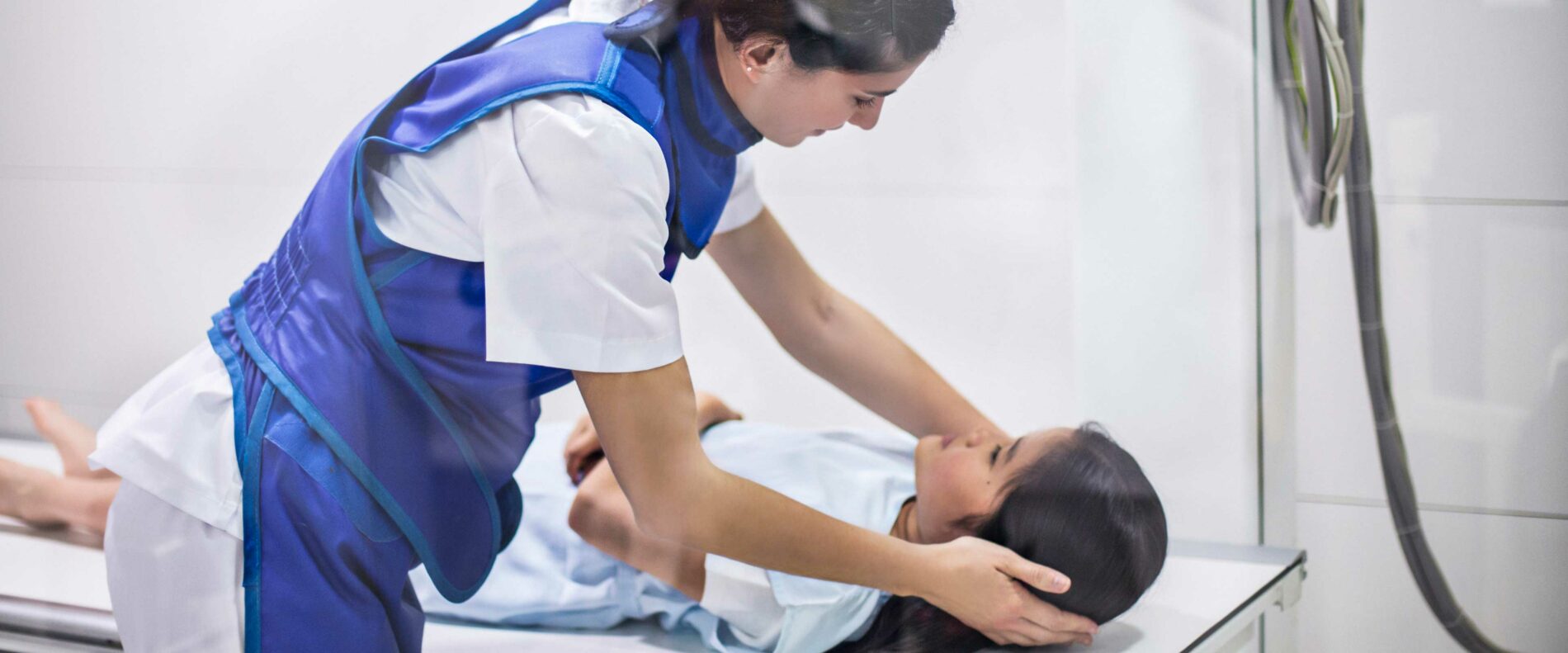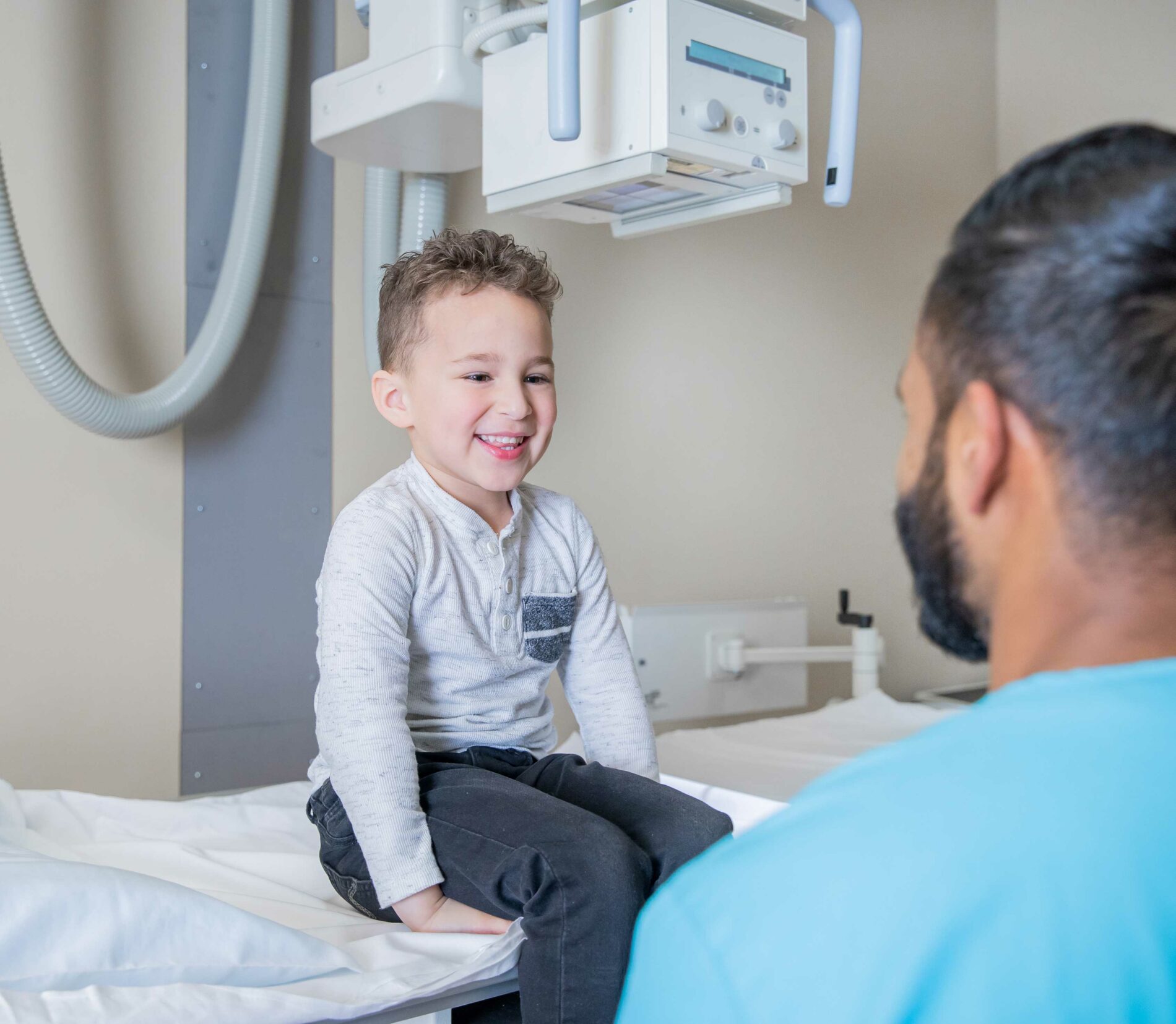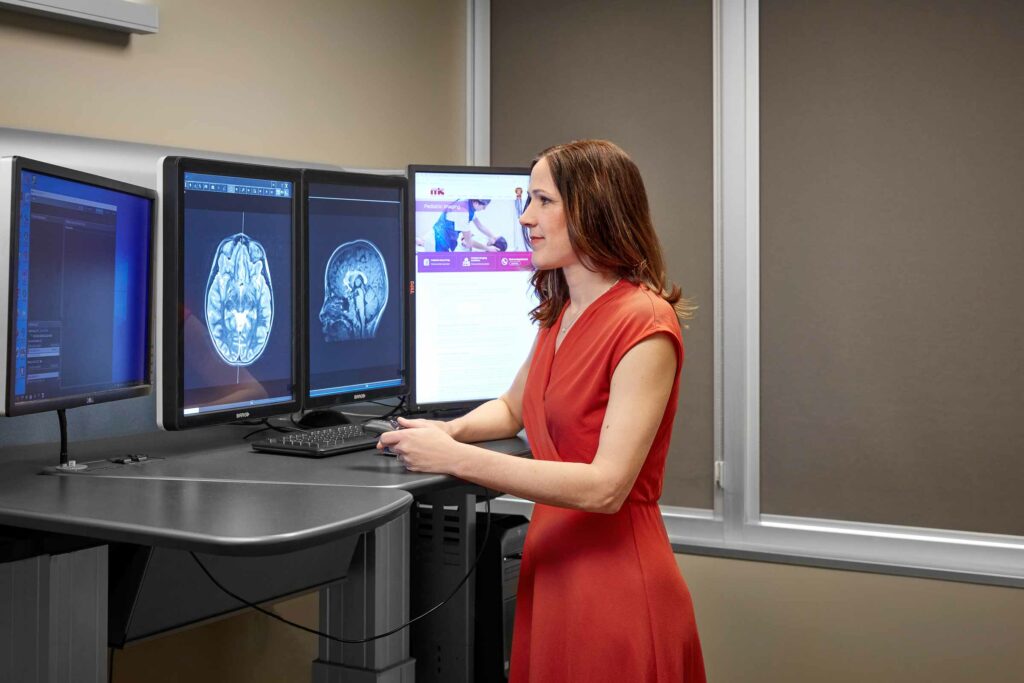Medically reviewed by Dr. Jacob Jaremko, M.D, Ph.D., FRCPC
What is Pediatric Imaging?
Pediatric Imaging is a sub-specialty of diagnostic imaging for infants, children, and adolescents. The structure, body composition and physiology of your child are not the same as a 35-year-old adult. Therefore, we must adjust imaging procedures accordingly.
MIC provides pediatric imaging in our clinics for the following modalities:
If your child requires pediatric imaging in a different modality, such as fluoroscopy or nuclear medicine, we will refer them to the Stollery Children’s Hospital.
MIC and the Stollery Children’s Hospital
The pediatric radiologists in our clinics are the same ones that work at the Stollery Children’s Hospital – one of the largest pediatric hospitals in Canada and a world-leading centre for advanced procedures such as complex cardiac surgeries and organ transplants.
Some of our radiologists are also world-recognized researchers in fields such as ultrasound, 3D imaging and artificial intelligence, and others are nationally recognized for their role in educating other physicians.
If your doctor refers you and your child to MIC Medical Imaging, you can be sure you are in good hands.
ALARA and Pediatric Imaging
In our province, the College of Physicians and Surgeons of Alberta (CPSA) and the Alberta Society of Radiologists (ASR) regulate the practice of medicine. Our governing bodies are constantly evaluating policies and procedures to ensure Albertans receive the highest level of care. One important theme in diagnostic imaging is the ALARA principle – which stands for “as low as reasonably achievable.”
The ALARA principle ensures that patients receive minimal amounts of radiation during an exam. If a proposed treatment has no direct medical or diagnostic benefit, you should not conduct the procedure. Radiation strength varies depending on body composition, the area of interest, and the type of exam. Therefore, the amount of radiation needed to complete an exam is different for a 250-pound adult than a 40-pound child.
ALARA is particularly important in pediatric radiology because children’s cells are more sensitive to ionizing radiation. Our team closely follows ALARA principles, limiting the number of scans, using alternative imaging techniques, and tailoring radiation doses to ensure minimal exposure.
How Can I Help Prepare My Child for Their Exam?
Pediatric imaging can be challenging if a patient is stressed or in pain. To create a more comfortable environment and a smooth experience, we recommend taking the following steps before your appointment:
- Talk to your child about the procedure so they understand why medical imaging is needed.
- In most cases, you or another family member can support your child during the exam. There are some instances where you may have to wait outside the room or behind a control panel.
- For example, pregnant mothers cannot expose their fetus to radiation.
- Please bring your child’s favourite toy, book, tablet, blanket, stuffed animal, or object to help comfort and distract them during wait times.
Communicating with your child before the exam can make all the difference. The more comfortable they are going into their appointment, the more cooperative they will be, which will lead to a shorter exam and a more positive experience.
Pediatric Radiology Imaging Services
X-Ray Imaging
Pediatric x-ray imaging is available at all locations. This procedure uses a small dose of ionizing radiation to produce two-dimensional images of an area of interest.
Learn more about pediatric x-ray.
Ultrasound
Pediatric ultrasound uses high-frequency sound waves to produce images of the body such as the brain, hip, abdomen, etc. MIC provides pediatric ultrasound at eleven locations. Some exams are more specialized and only performed at our Century Park and Terra Losa locations. Our central booking team will help coordinate with you to find the most convenient location.
Learn more about pediatric ultrasound.
Bone Density
Pediatric bone density tests help assess bone mass and fracture risk. Typically, this exam helps physicians diagnose osteopenia or osteoporosis. While these conditions are rare in children, sometimes underlying medical conditions can cause decreased bone mass production. MIC offers pediatric bone density scans at our Terra Losa location.
Learn more about pediatric bone density tests.
Boston Children’s Hospital. (n.d.). Ultrasound. https://www.childrenshospital.org/conditions-and-treatments/treatments/ultrasound
Canadian Paediatric Society. (n.d.). Paediatrics & Child Health. https://cps.ca/en/
Kang, Y. R., & Koo, J. (2017). Ultrasonography of the pediatric hip and spine. Ultrasonography, 36(3), 239–251. https://doi.org/10.14366/usg.16051
Radiology Info. (2021, Jul 20). Pediatric Care. https://www.radiologyinfo.org/en/pediatric
Sills, I., Lynch, J., Casella, S., DiMeglio, L., Gonzalez, J., Wintergerst, K., Kaplowitz, P. (2016, Oct 1). Bone Densitometry in Children and Adolescents. American Academy of Pediatrics, 138 (4). https://doi.org/10.1542/peds.2016-2398
Stollery Children’s Hospital. (2021). https://www.stollerykids.com/
Texas Children’s Hospital. (2015). Preparing Your Child for an Abdominal Ultrasound: How to Get Ready and What to Expect. https://www.texaschildrens.org/blog/2015/05/preparing-your-child-abdominal-ultrasound-how-get-ready-and-what-expect
University of Alberta. (n.d.). Pediatric Radiology Fellowship Program. https://www.ualberta.ca/radiology-and-diagnostic-imaging/programs/fellowship-training/pediatric-radiology-fellowship-program.html
University of Rochester Medical Centre – Golisano Children’s Hospital. (n.d.). Pediatric Bone Health Program. https://www.urmc.rochester.edu/childrens-hospital/endocrinology/pediatric-bone-health-program/tests-procedures/bone-densitometry.aspx
Wildman SS, Henwood-Finley MJ. Pediatric DXA: A Review of Proper Technique and Correct Interpretation. Journal of the American Osteopathic College of Radiology. 2015;1(3):17-26. https://www.jaocr.org/articles/pediatric-dxa-a-review-of-proper-technique-and-correct-interpretation


